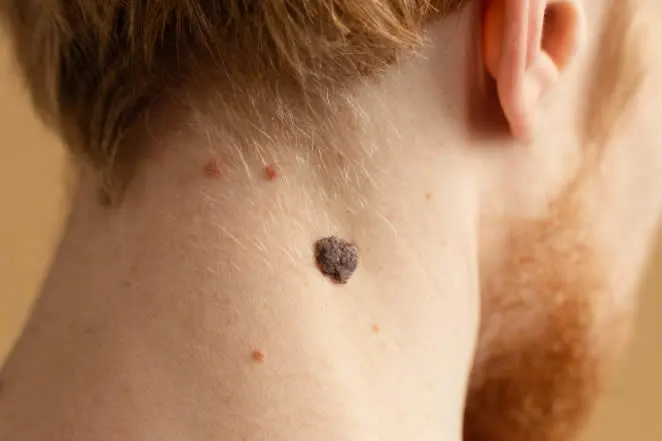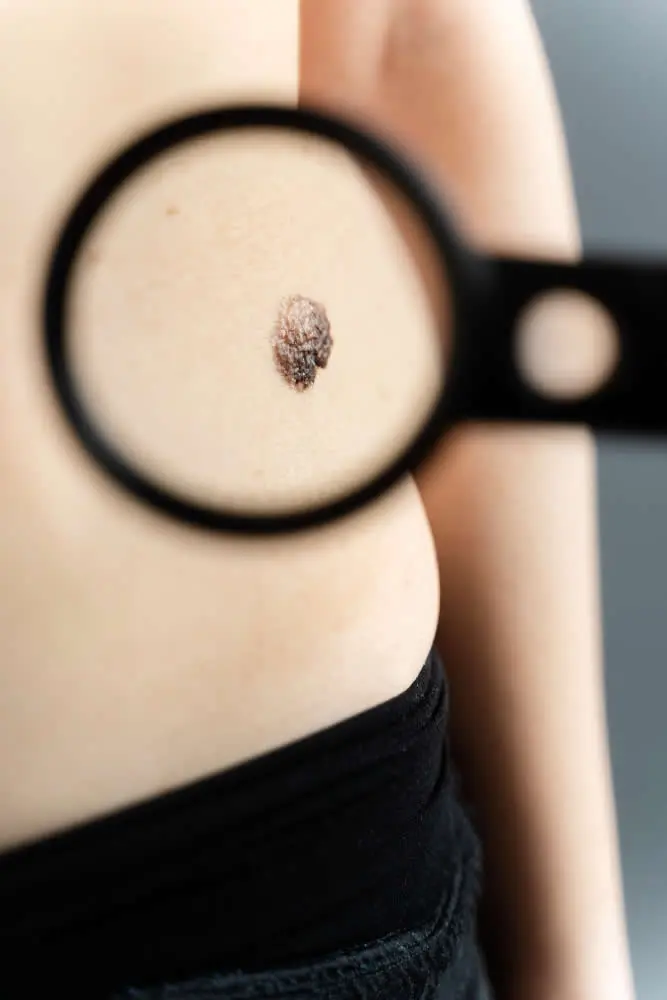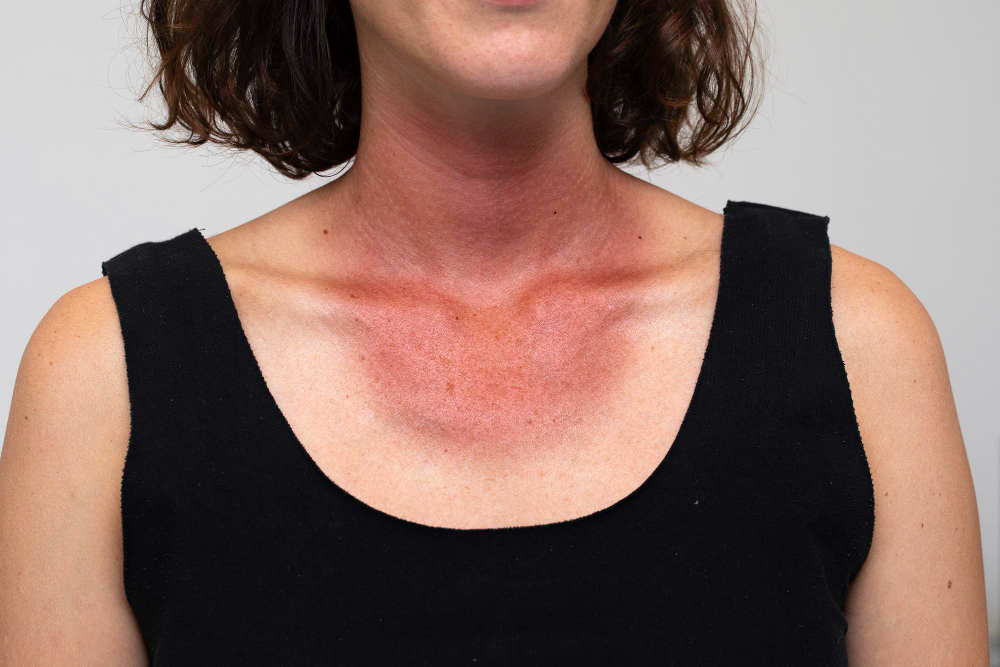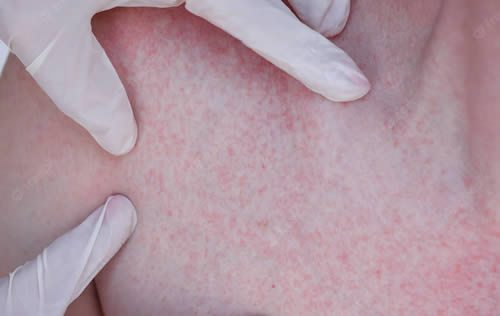Seborrheic Keratosis
What is Seborrheic Keratosis?
Seborrheic keratosis is a common skin condition that results in the formation of raised, scaly, waxy or wart-like growths on the skin. These growths are noncancerous (benign) and usually appear in middle-aged or older individuals. They can range in color from light tan to dark brown and can be found on any part of the body, including the face, neck, chest, and back. Seborrheic keratosis is caused by an overgrowth of skin cells, but the exact cause is unknown. They are often harmless, but may be removed for cosmetic reasons or if they become irritated or catch on clothing.
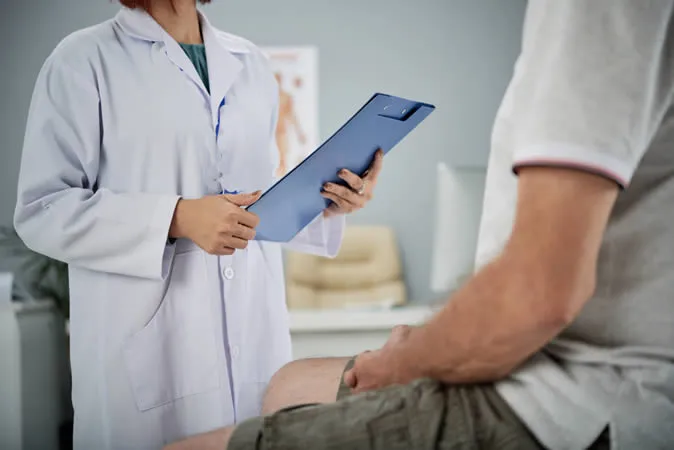
What are the symptoms of Seborrheic Keratosis?
Seborrheic keratosis usually appears as raised, scaly growths on the skin. The growths can range in size from a few millimeters to several centimeters and can appear anywhere on the body. They are typically:
- Brown, black, or tan in color
- Waxy or wart-like in texture
- Stuck-on appearance, as if they are pasted onto the skin
- Smooth or slightly scaly
- Round or oval in shape
Seborrheic keratosis is a benign (noncancerous) condition and typically does not cause any symptoms or discomfort. However, some individuals may experience itching or irritation in the affected area. If this occurs, it is important to have the growth evaluated by a dermatologist or skin care professional.
What treatments are available for Seborrheic Keratosis?
Treatment for seborrheic keratosis is not usually necessary as it is a benign (noncancerous) condition. However, some individuals may choose to have their seborrheic keratosis removed for cosmetic reasons. If a seborrheic keratosis becomes irritated or catches on clothing, it may also need to be removed. The following are some of the most common treatments for seborrheic keratosis:
- Cryotherapy: This involves freezing the growth with liquid nitrogen, causing it to blister and eventually fall off.
- Curettage: This involves scraping the growth off with a curette, a sharp, spoon-shaped instrument.
- Electrosurgery: This involves using an electric current to remove the growth.
- Excision: This involves cutting the growth out with a scalpel.
The choice of treatment will depend on the size, location, and number of growths, as well as the patient’s preference. The dermatologist will help determine the best treatment option.
How to Help Prevent Seborrheic Keratosis
The exact cause of seborrheic keratosis is unknown, so there is no guaranteed way to prevent it. However, the following may help reduce the risk of developing seborrheic keratosis:
Follow these tips as well:
- Limit sun exposure: Wear protective clothing and use a broad-spectrum sunscreen with a high SPF when spending time outside.
- Avoid tanning beds: UV radiation from tanning beds can increase the risk of developing seborrheic keratosis.
- Maintain a healthy diet: Eating a diet rich in antioxidants and anti-inflammatory foods may help reduce the risk of developing seborrheic keratosis.
- Avoid smoking: Smoking has been linked to an increased risk of skin cancer, including seborrheic keratosis.
- Monitor skin changes: Regularly check your skin for any new growths or changes in existing moles, and have any suspicious growths evaluated by a dermatologist.
It is important to keep in mind that while these steps may help reduce the risk of developing seborrheic keratosis, they do not guarantee prevention. Regular skin checks and prompt evaluation of any suspicious growths are essential for early detection and treatment of skin conditions.

FAQ About Seborrheic Keratosis
What does Seborrheic Keratosis look like?
A: Seborrheic Keratosis appears as a raised, scaly, or wart-like growth on the skin with a brown, black, or light-brown color.
Is Seborrheic Keratosis contagious?
A: No, Seborrheic Keratosis is not contagious.
Are there any home remedies for Seborrheic Keratosis?
A: No, there are no proven home remedies for Seborrheic Keratosis. Consult a dermatologist for treatment options.
Can Seborrheic Keratosis turn into skin cancer?
A: No, Seborrheic Keratosis is a benign growth and does not turn into skin cancer.
Is Seborrheic Keratosis painful?
A: No, Seborrheic Keratosis is usually not painful, but removal procedures may cause some discomfort.
Is there a dermatologist near me in Kansas City that offers treatment for Seborrheic Keratosis?
Yes. At our Kansas City dermatology office we offer treatment for Seborrheic Keratosis to patients from Kansas City and the surrounding area. Contact our office today to schedule an appointment.

